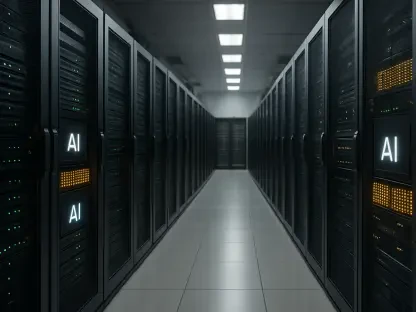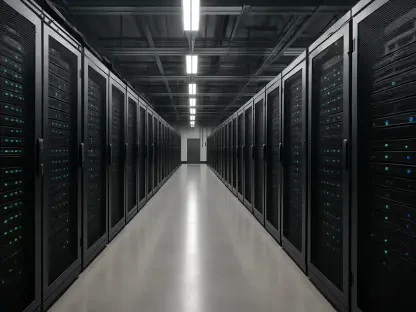In today’s dynamic technological landscape, combining traditional enterprise applications with modern cloud-native microservices poses significant challenges. Successfully integrating monolithic applications with cutting-edge microservices architectures requires sophisticated disaster recovery solutions. As businesses strive for agility and data consistency, they find themselves at a critical juncture of retaining robust disaster recovery while navigating complex system integrations.
Transition from Legacy to Cloud-Native Systems
Managing Coexistence
The evolution from traditional models, encompassing application servers and SQL databases, to flexible microservices has been transformative. Still, it demands gradual adaptation. Many enterprises adopt the Strangler design pattern, intertwining newer microservices with older monolithic systems. This strategy introduces complexities as both systems must coexist, often resulting in overlapping functionalities. These challenges necessitate an integrated approach to data protection that supports both old and new architectural paradigms.
As enterprises migrate, they face a twist in balancing old systems with new capabilities. Microservices offer fast updates and flexibility, but the gradual adoption and integration often lead to partial coexistence with legacy systems. Various teams may employ different methodologies—such as DevOps for microservices and traditional approaches for monoliths, underlining a need for synchronization to avoid inconsistencies and disruptions. This synchronization is vital for facilitating updates, maintaining operations, and safeguarding data.
Integrating Innovative Solutions
In this intricate landscape, the significance of a unified data recovery approach becomes evident. The concept of a metaphorical “time machine” emerges as a solution—a robust, independent system that can roll back application states or transfer applications across cloud environments while maintaining consistency. This system must also offer rigorous protection against malware and ensure seamless disaster recovery. Such capabilities embody the evolving needs of businesses for comprehensive solutions, with Commvault’s Cloud Rewind as a potential pivotal tool, aiding in the recovery of complex applications and securing business continuity.
Addressing modern threats such as ransomware alongside conventional IT challenges calls for proactive cybersecurity measures. A resilient system offering cyber resiliency is paramount in ensuring businesses recover from catastrophic events without compromising data integrity. Organizations must consider solutions that provide multilayered security, including encryption, automated backups, and real-time threat monitoring. Adopting these strategies enables enterprises to safeguard vital data and maintain continuity in dynamic environments.
Advancing Unified Data Protection
Bridging Architectural Gaps
In the contemporary business landscape, bridging the gap between monolithic applications and microservices is essential for cohesive operation. A unified approach ensures consistent data protection across both systems. This alignment allows businesses to protect data assets effectively while remaining adaptable to shifting technological landscapes. Companies implementing advanced data protection strategies facilitate seamless transitions between legacy systems and modern architectures, driving innovation while safeguarding critical resources.
These integrated protection strategies must consider the myriad of technological differences between old and new systems. While monolithic applications might rely on established backup routines, microservices demand more agile, continuous backup approaches. Effective data protection solutions navigate these differences seamlessly, accommodating both architectures. By ensuring integrated functionality across diverse systems, businesses can optimize their operations without jeopardizing data integrity, ultimately easing the journey towards full cloud integration.
Ensuring Cyber Resiliency
Incorporating advanced technologies like Commvault’s Cloud Rewind offers a smooth transition towards achieving comprehensive cyber resiliency. By enabling recovery from unforeseen data disasters and enhancing application sustainability, businesses can ensure continuity and resilience. The solution aligns with the contemporary demand for privacy, security, and flexibility, empowering organizations to better protect their complex frameworks against potential risks. This advance builds a framework that supports long-term adaptability and innovation.
The dual goals of achieving seamless integration and robust protection require a careful balance of technology and strategy. As companies navigate these waters, they must invest in continuous improvement in cybersecurity measures, understanding the nuances and adaptability of both traditional and cloud-native applications. By focusing on a cohesive approach to data protection, businesses can successfully harness the power of current technologies, leading to greater efficiency and security in their operations.
Navigating the Path Forward
In the rapidly evolving realm of technology, integrating traditional enterprise software with modern cloud-based microservices presents considerable hurdles. The challenge lies in ensuring these applications remain resilient, which necessitates advanced disaster recovery strategies. For contemporary businesses, a significant strategic hurdle is the seamless integration of monolithic applications with the latest microservices architecture. As companies aim to enhance agility and maintain data consistency, they find themselves at a vital crossroads. This involves maintaining strong disaster recovery while maneuvering through the complexities of system integration. Businesses must carefully plan to ensure that both legacy systems and new technologies operate smoothly together. The goal is to achieve a harmonious balance where old and new technologies enhance one another, promoting operational agility, data reliability, and system resilience. Companies need robust strategies to embrace new technological trends and preserve the integrity of existing systems to achieve sustainable and efficient digital transformation.









